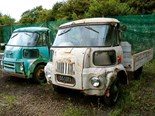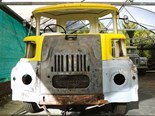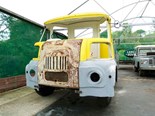Restoration project: FGK Morris Restoration—Part 22
Deals on Wheels writer Lyndsay Whittle on his latest progress with the FGK Morris restoration
When I embarked on this restoration back in 2016, I knew it was going to be a biggie, but even with a couple of other restorations under my belt, I don’t think I’d truly thought the entire thing right through.
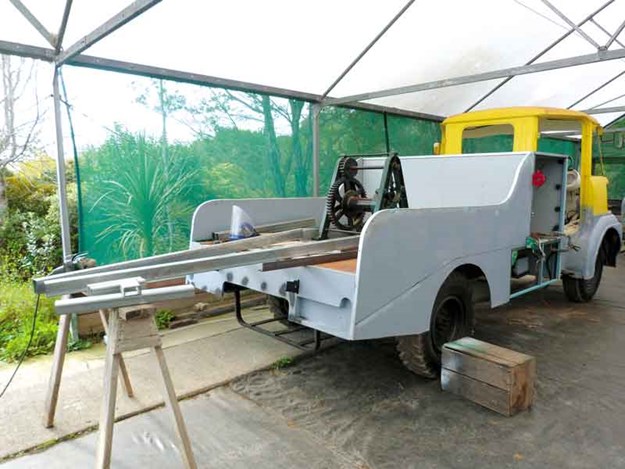
That’s not to say that I’m not enjoying the process; in fact, I have to say that although I’m having my fair share of frustrations along the way, I enjoy navigating my way through the various obstacles I come across.
When I started out with my first project—my ’53 K Bedford—about four years ago, I had my brilliant engineer-mate Dean Southey to carry out the difficult jobs.
But since the inconsiderate bugger upped sticks and moved north, I have to box on myself with, of course, the help of my clever restoration buddy Murray, who is the reason why I started down this restoration path.
I met Murray in 2012 when I went to do a story for Deals on Wheels about the 1931 W Bedford he restored. For the benefit of those of you who have only picked up on the restoration story 22 months down the track, it was Murray who talked me into completing the restoration of my Bedford that I started in the late 1980s and had stalled on for about 30-plus years.
The poor sod suggested I carry out the restoration on the Beddy at his place and I’ve been there ever since and am now on my fourth restoration with there being little chance of my leaving. That’s the plan anyhow.
Getting down to business
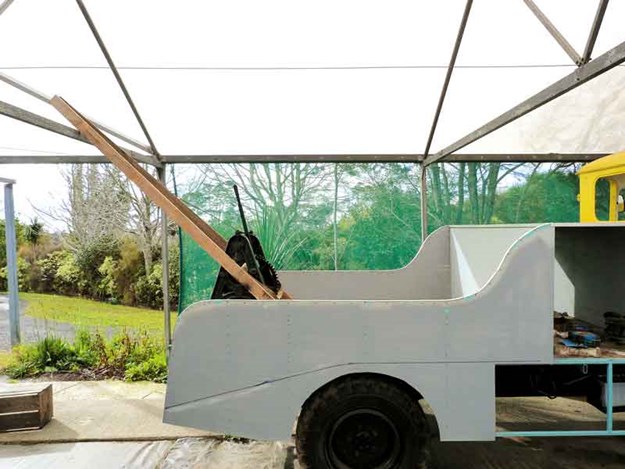
The Morris job is still plodding along, with the tow wagon bodywork currently taking up most of the 20 or so hours each week that I’ve been able to dedicate to the task at hand.
Anybody who’s been following the story right along will be fed up with reading my promises to do something about getting the glass fitted to the truck. So I’m not even going to waste the reader’s time trying to conjure up any lame excuse for the lack of activity on that score this month.
On a positive note, though, I have been busy with manufacturing parts for the towing rig in an effort to make it all aesthetically pleasing in the bargain.
Since I am not the type of person who can draw the concepts I have in my mind on a piece of paper, I have to content myself with doing mock-ups with pieces of timber to get a basic idea of what the finished product will look like in the flesh. The photos I’ve included show my modus operandi.
The cascading sides of the body have turned out to my liking, and when I figured it’s because of my methodology—sticking a 2400x1200 sheet of ply up against the deck I’d built and proceeding to draw varying-shaped lines down the side until I finally got the shape I was looking for—I reckoned the same would work for the jib.
Using a stringer of the roof of one of the sheds I’ve been working in as a means of holding the wooden mock-up, I think I’ll wind up with the correct angle for the boom.
We’ll know by the next instalment if my idea has worked because, as this issue goes to print, I’m working flat-out to put this part of the build to bed.
Attention to details
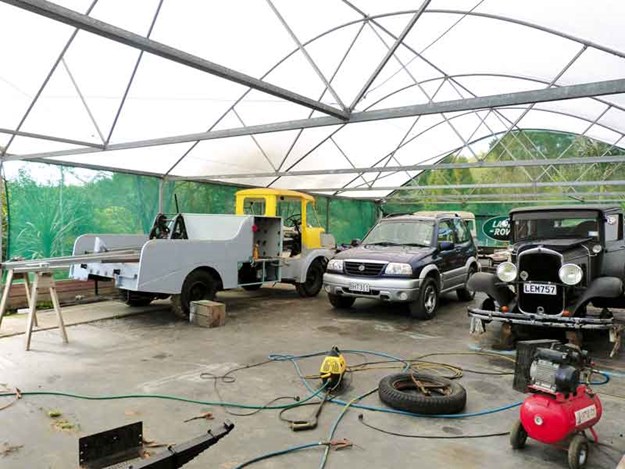
Some people might say that I’d get the job finished a whole lot sooner if I didn’t waste my time paying minute attention to what appear to be silly little details that really wouldn’t make a hill of beans of difference whether I included them or not.
The details I’m speaking of are things such as routing the plate that the crane sits on, into the timber deck just because when it’s finished everything will sit flush rather than standing proud.
Another detail that I’ve included is using the inner mudguards of the old deck that came with the truck instead of simply making the deck flat.
This decision alone cost me an inordinate amount of extra time in cutting timber around the steel, not to mention the time it took to cut the guards to suit and to make the framework that holds them in place.
However, I’m hoping that the small details will make a big difference in the completed job, though I think it will be a few months before anyone can make a judgement on that score. While we’re on the subject of small details, I can tell you that there were a few rusty cogs turning in my tiny brain when it came to manufacturing the tail panel.
While it can be argued that the detail here wasn’t mere frippery, as the tail lights, indicators, and number plate did need to be recessed in order for them not to get knocked off at some stage later in the truck’s life, it did throw up a few challenges for someone who isn’t a tradesman metal worker.
In any event, I think while it’s not perfect by any stretch of the imagination but it looks okay, and I’ve learned a few new skills along the way.
Footnote: Take a look to the far right of the shot of three vehicles and you may catch a glimpse of yet another distraction I’ve added to an already busy workload.
It’s a 1929 DeSoto and I’m looking for a couple of wheels for it. If anyone can point me in the right direction, I’d be eternally grateful.
Coming up...
The crane should be well and truly taking shape
Tip of the month:
Try doing something outside your comfort zone
Keep up to date in the industry by signing up to Deals on Wheels' free newsletter or liking us on Facebook.





.jpg)


.jpg)



